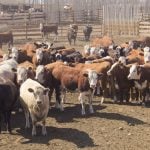
Research

Comparing tame forages under grazing

Researcher targets fibre digestibility in cattle for forage efficiency
Initial research found surprising links between cattle efficient at digesting fibre and methane emissions

Wearable tech for cattle?
Researchers at the University of Calgary are looking into how collars on cattle might yield information to help producers improve bull performance and keep calves healthy

Researcher evaluates benefits and risks of virtual fencing for cattle
A University of Alberta grad student ran a two-year study to see how NoFence works in the pasture

Fast action at the watering hole
Research on the Record with Reynold Bergen

Using reproductive tract scoring to pick replacement heifers
A project at the Livestock and Forage Centre of Excellence is comparing conception rates of replacements to earlier reproductive tract scores

Investigating feed efficiency and climate tolerance
Researchers at the University of Alberta are looking into whether there’s a link between feed efficiency and weather tolerance in cattle

Surveyed producers report soil health benefits to cover cropping
Producers grazing cover crops reported soil health benefits, but cited a lack of information as a barrier

Researchers work with pen riders to fine-tune BRD diagnosis
Graduate student hopes to ‘crack the code’ for BRD by combining pen rider experience with new technology

Living Lab integrates Indigenous perspective into ag research
First Nations communities are working with several ag and environmental organizations on a Living Lab in north-central Saskatchewan



